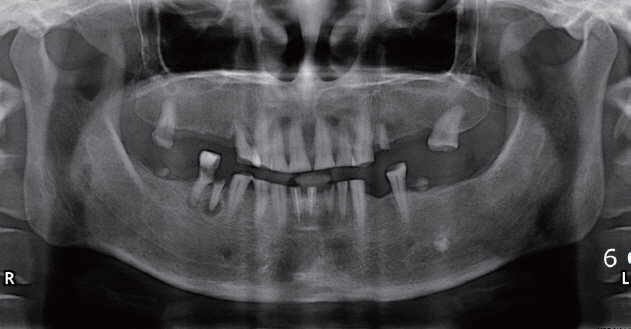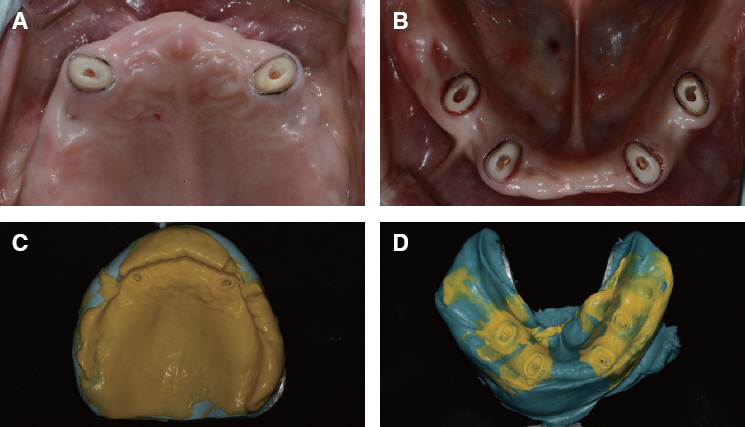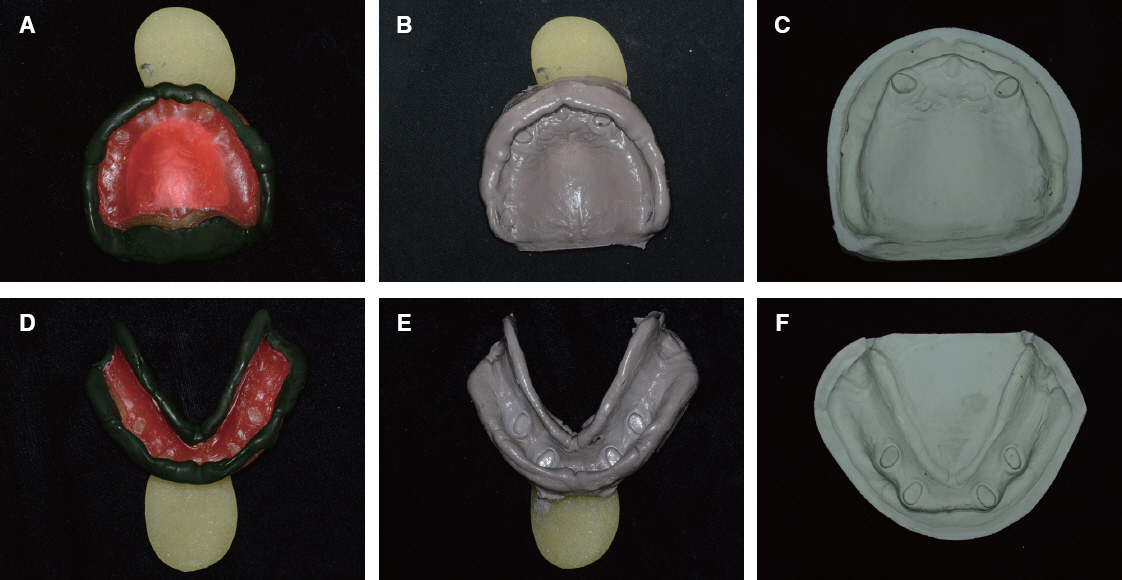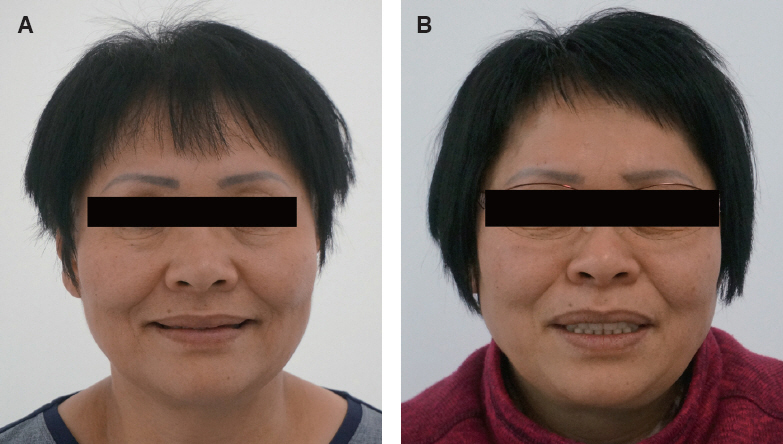J Dent Rehabil Appl Sci.
2016 Dec;32(4):307-313. 10.14368/jdras.2016.32.4.307.
Overdenture treatment in patient with severely worn dentition: a case report
- Affiliations
-
- 1Department of Prosthodontics, School of Dentistry, Chonnam National University, Gwangju, Republic of Korea. psw320@jnu.ac.kr
- KMID: 2369071
- DOI: http://doi.org/10.14368/jdras.2016.32.4.307
Abstract
- Overdenture is one of the methods of patients with severely worn dentition. Remaining natural teeth help preserve alveolar bone and proprioception and provide rigid support. Also, overdenture distributes the concentrated stress applied to the abutment tooth and denture supporting tissues. There is an advantage that it can provide long-term stability to denture. In this case, the patient with only a few teeth due to severe wear and caries was satisfied with good function and favorable esthetics by using overdenture.
Keyword
Figure
Reference
-
References
1. Licht WS, Leveton EE. Overdentures for treatment of severe attrition. J Prosthet Dent. 1980; 43:497500. DOI: 10.1016/0022-3913(80)90317-0.2. Zamikoff II. Overdentures-theory and technique. J Am Dent Assoc. 1973; 86:853–7. DOI: 10.14219/jada.archive.1973.0171. PMID: 4570006.3. Basker RM, Harrison A, Ralph JP. Overdentures in general dental practice. Part 5-the use of copings and attachments. Br Dent J. 1983; 155:9–13. DOI: 10.1038/sj.bdj.4805107. PMID: 6351880.4. Brewer AA, Morrow RM. Overdentures. 2nd ed. St. Louis: Mosby;1980. p. 4–10.5. Turner KA, Missirlian DM. Restoration of the extremely worn dentition. J Prosthet Dent. 1984; 52:467–74. DOI: 10.1016/0022-3913(84)90326-3.6. Ettinger RL, Jakobsen J. Caries: a problem is an overdenture population. Community Dent Oral Epidemiol. 1990; 18:42–5. DOI: 10.1111/j.1600-0528.1990.tb00660.x.7. Garberoglio R, Brännström M. Scanning electron microscopic investigation of human dentinal tubules. Arch Oral Biol. 1976; 21:355–62. DOI: 10.1016/S0003-9969(76)80003-9.8. Fosse G, Seale PK, Eide R. Numerical density and distributional pattern of dentine tubules. Acta Odontol Scand. 1992; 50:201–10. DOI: 10.3109/00016359209012764. PMID: 1514394.9. Fenton AH. The decade of overdentures:19701980. J Prosthet Dent. 1998; 79:31–6. DOI: 10.1016/S0022-3913(98)70190-8.10. Lord JL, Teel S. The overdenture: patient selection, use of copings, and follow-up evaluation. J Prosthet Dent. 1974; 32:41–51. DOI: 10.1016/0022-3913(74)90097-3.11. Park HK, Chun CH, Cho KZ. Finite element analysis of mandibular stresses induced by overdenture with different designs of abutment copings. J Korean Acad Prosthodont. 1991; 29:141–70.
- Full Text Links
- Actions
-
Cited
- CITED
-
- Close
- Share
- Similar articles
-
- Complete mouth rehabilitation with vertical dimension increase in patient with extremely worn dentition
- Mouth rehabilitation of a patient with severely worn dentition with vertical dimension increase
- Prosthodontic management of worn dentition in pediatric patient with complete overlay dentures: a case report
- Full mouth rehabilitation using zirconia crown in severe worn dentition: a case report
- Full-mouth rehabilitation with increasing minimum vertical dimension in the patient with severely worn dentition and deep bite












